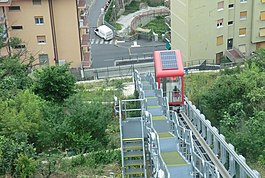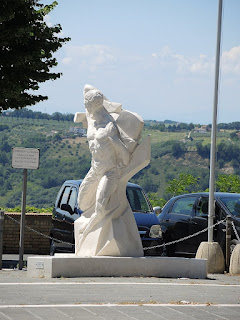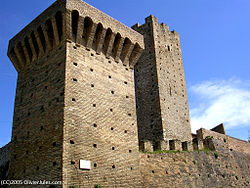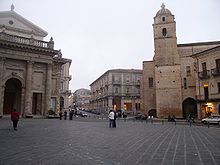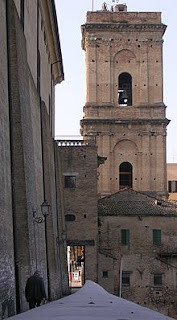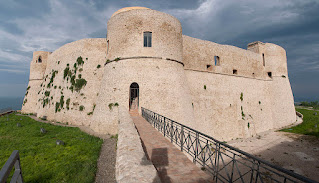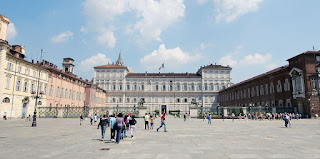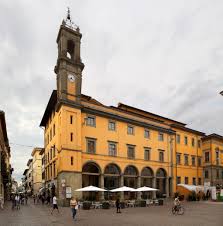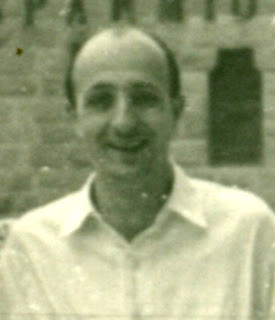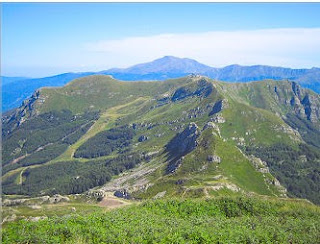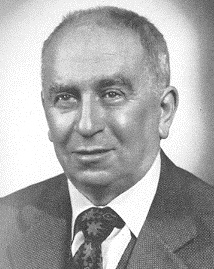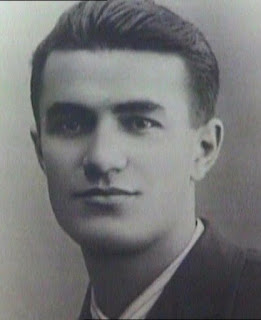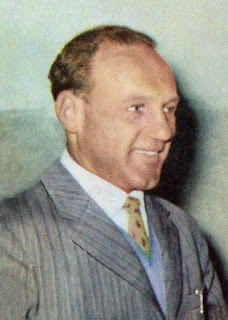Amazing courage of a young girl who protected her compatriots
Brave teenager Stefanina Moro, who served as a partisan during World War II, died on this day in 1944 in Asti as a result of injuries inflicted upon her by Nazis, who caught her and tortured her for information.
Stefanina was a courier who helped
groups of partisans to communicate
Stefanina, who was born in Genoa in 1927, is thought to have been between 16 and 17 years old when she died of her wounds in a hospital in Asti.
After growing up in the Quezzi district in Genoa, Stefanina became a partisan and later served as una staffetta - a courier - responsible for maintaining communications between groups of partisans to help the Italian resistance movement during the war of Italian liberation.
Sadly, in 1944, Stefanina was captured by Nazis and taken to the Casa del Fascio - the local Fascist party headquarters - in Cornigliano, about seven kilometres (4 miles) west of Genoa, to be interrogated. Stefanina was then moved to the Casa dello Studente in Corso Gastaldi, a former university building that was being occupied by the Nazis and had been turned into a prison.
Prisoners were routinely tortured there under the command of an SS officer, Friedrich Engel, who would come to be known as the ‘Executioner of Genoa’ or the ‘Butcher of Genoa.’ To try to make Stefanina reveal the names of her fellow partisans, the Nazis tortured her for several days, but their attempts were unsuccessful and she would not speak and never gave anyone away.
 |
| SS commander Friedrich Engel ordered the torture of partisans |
Stefanina’s name is inscribed on a memorial to all those from the Quezzi district of Genoa, who had died while opposing the Nazi occupation of the city. The dedication on the memorial reads: ‘Non caddero invano ma per la libertà. Il comitato di Liberazione Nazionale Liguria agli eroici caduti del rione di Quezzi. (They did not fall in vain but for freedom. The National Liberation Committee of Liguria to the heroic fallen of the Quezzi district.)
The city of Genoa also named a street in Stefanina’s honour. In Via Stefanina Moro, there is a plaque that says: Via Stefanina Moro – Caduta per la libertà – 1927 – 9/10/1944.
In April 2020 on the 75th anniversary of Italy’s liberation, Sandra Zampa, under secretary at the Ministry of Health in the Giuseppe Conte administration, gave an address honouring the women of the Italian resistance, naming Stefanina Moro alongside other women partisans, such as Nilde Iotti and Irma Bandiera.
Friedrich Engel, under whose command Stefanina’s torture took place, was convicted in absentia of 246 murders by an Italian military court in 1999, for his role in the 1944 executions of Italian prisoners.
.PNG) |
| A street in the Genoa district of Quezzi, where Stefania was born, carries her name |
In 2004, Germany’s highest court, the Bundesgerichtshof, overturned the previous ruling on the grounds that, despite acknowledging that Engel ordered the executions, the case of criminal murder had not been proven. The court would not permit a new trial because of Engel’s age and state of health.
Engel died at the age of 97 in February 2006 in Hamburg, more than 60 years after he ordered the torture that led to the death of Stefanina Moro.
Travel tip:The Doge's Palace in Genoa is one of the city's
many splendid 16th century palaces
Genoa, where Stefanina Moro was born and brought up, is the capital city of Liguria and the sixth largest city in Italy. It has earned the nickname of La Superba because of its proud history as a major port. Part of the old town was inscribed on the World Heritage List in 2006 because of the wealth of beautiful 16th century palaces there, many of which have been restored to their original splendour. The Doge's Palace, the 16th century Royal Palace and the Romanesque-Renaissance style San Lorenzo Cathedral are just three examples. The area around the restored harbour area offers a maze of fascinating alleys and squares.
Travel tip:The Ascensore di Quezzi climbs 249 feet
to link two parts of the hillside district
The street named after Stefanina, Via Stefanina Moro, is in the Quezzi district of Genoa, where the heroic girl was born. Quezzi, a residential area with many high rise buildings, sits high above the port. Built on a hillside, it has many steep streets. Since 2015, residents and visitors have been able to use the Ascensore di Quezzi - the Quezzi Lift - a kind of cross between a conventional lift and a cable car, which links the lower part of the district at Via Pinetti with the upper part at Via Fontanarossa, 76 metres (249 feet) above, in exactly 100 seconds. The 131m (430ft) journey is in two sections, one with a gradient of 44%, the other with a gradient of 30%. The lift’s single car, which carries a maximum of 25 passengers, tilts at the moment the gradient changes so that its floor remains level.
Also on this day:
1221: The birth of historian Salimbene di Adam
1469: The death of Renaissance painter Fra’ Filippo Lippi
1562: The birth of anatomist and physician Gabriele Falloppio
1841: The birth of Paris art café owner Agostina Segatori

